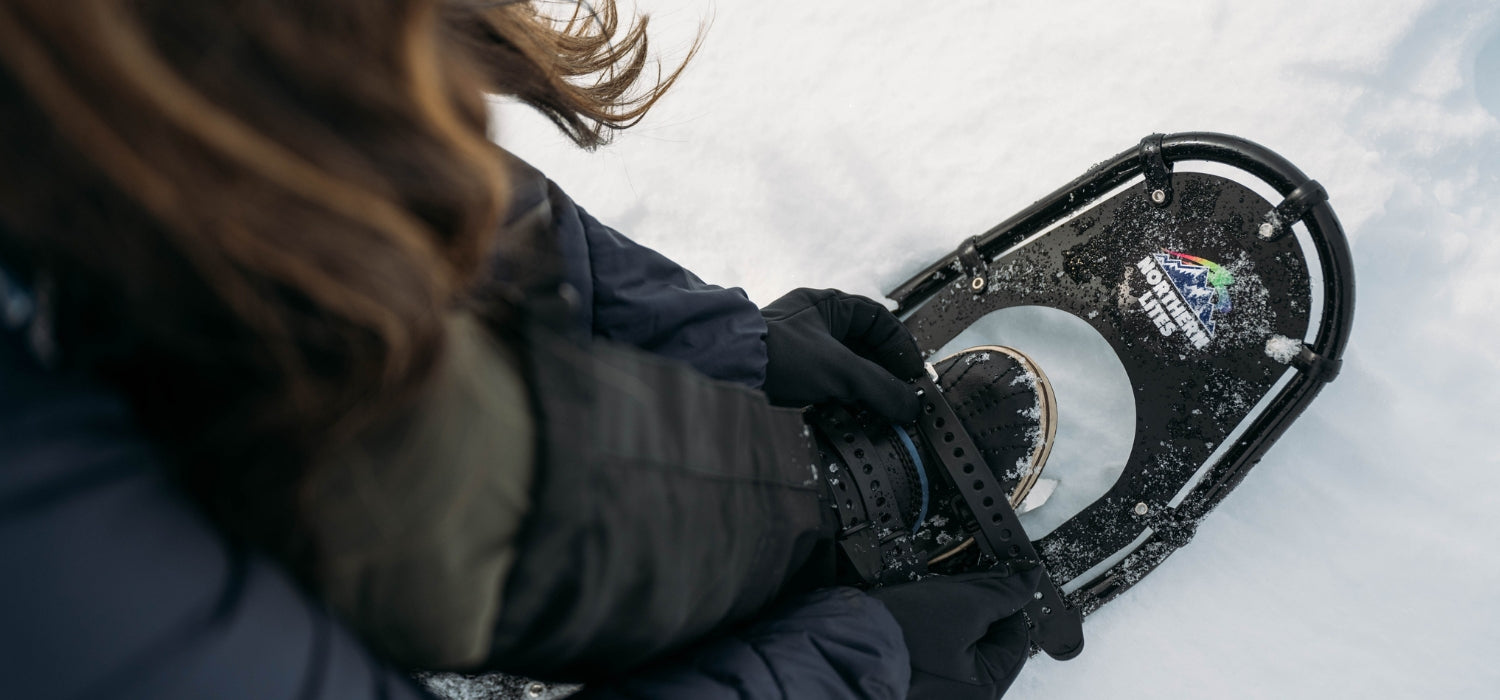Snowshoeing for fun is a relatively new thing. It’s been vital to certain professions, though, such as search and rescue, the military, scientists, forest rangers, and hunters, to name just a few. Snowshoes are built specifically for certain types of terrain, for leisure use, and for a certain personal weight and build.
History Of Snowshoes
Snowshoes were first used in antiquity in Central Asia around 4,000 years ago. A snowshoe from 3,800 BCE was found in the Alps in 2003 made from birch and rope.
Snowshoes in ancient America consisted of the same wood base but with rawhide laces. The Alaskan natives of antiquity used long, ski-like snowshoes with upturned toes. Eastern natives around what is now Minnesota over to what is now New England used much the same footwear, except that theirs came to a point on both ends.
Snowshoes Today
Modern snow footwear uses modern materials like aluminum and foam. They’re invested with crampons and traction cleats. Some offer a heel lift bar for climbing steep inclines. The fastenings include military-grade Velcro in a hook and closure fashion, as well as heel supports and pivot bindings.
Today’s snowshoes are made to encounter any terrain you can throw at them. Hikers will want snowshoes made for flat or rolling country. Scientists and researchers will opt for technical snowshoes. Runners and fitness/wellness folks will seek out shoes made for packed snow.
3 Types Of Snowshoes
Snowshoes are chosen by the type of terrain on which they’ll be used. The terrain dictates what size shoe is required. The material and bindings are important for the type of terrain and the size of the wearer. Here are some examples:
Flat terrain
These are made for soft snow and have modest traction features. Wearers would need a longer shoe to navigate the soft snow. The bindings should comfortably stretch over the wearer’s winter boots.
Foam snowshoes are the logical choice for flat terrain. Both beginners and experienced users can wear them. They’re lightweight, quiet, and feel like walking in regular shoes. They originated in 2017 when Tamara Laug wanted a snowshoe like her Hoka running shoes.
The foam snowshoes flex as you walk, keeping the feet warm, but they don’t have crampons meant for deeper snow and ice. Foam snowshoes are pointed at the toe, round at the heel, and the closure wraps around the ankle with a loop and hook closure. Foam shoes tend to be cheaper than other types of snowshoes.
Rolling terrain
These shoes are designed for challenging terrain but not steep inclines or icy conditions. They offer crampons for traction. Some offer a heel lift for steeper inclines. Made of airplane-grade aluminum, they’re pointed at the toe and round at the heel.
The decking consists of durable TGS, a material that won’t tear. These snowshoes offer a toe claw and a three-claw crampon traction system, according to Crescent Moon snowshoes. Heel lifts in the snowshoes protect the calves from cramping. They’re lightweight, hardy, and made for both beginners and experienced.
Aluminum snowshoes originated in 1972 when Gene and Bill Prater were toying with snowshoe designs in the Cascade Mountains. The aluminum tubing with neoprene lacing and nylon decking were the prototypes of today’s aluminum snowshoe.
Mountain terrain
This is the snowshoe necessary for steep mountainsides and icy terrain. The crampons and heel lifts are more aggressive than those of other shoe types. The bindings support heavier winter boots. The smallest size that will support the wearer’s weight is recommended.
The benefits of snowshoes are innumerable: they float on the snow rather than plunging into it, they provide traction, they support the calves on steep slopes, and they make walking, racing, and trail-running much easier. Now, get out there and have some fun!
Shop Northern Lites for ultralight, innovative snowshoes, recognized for winning snowshoe races - These are sure winners!
Check out all of our snowshoes and snowshoe accessories.
Day Hiking / Beginner Snowshoes - Ultralight Trekking Series Snowshoes - Snowshoe Carry Bags

